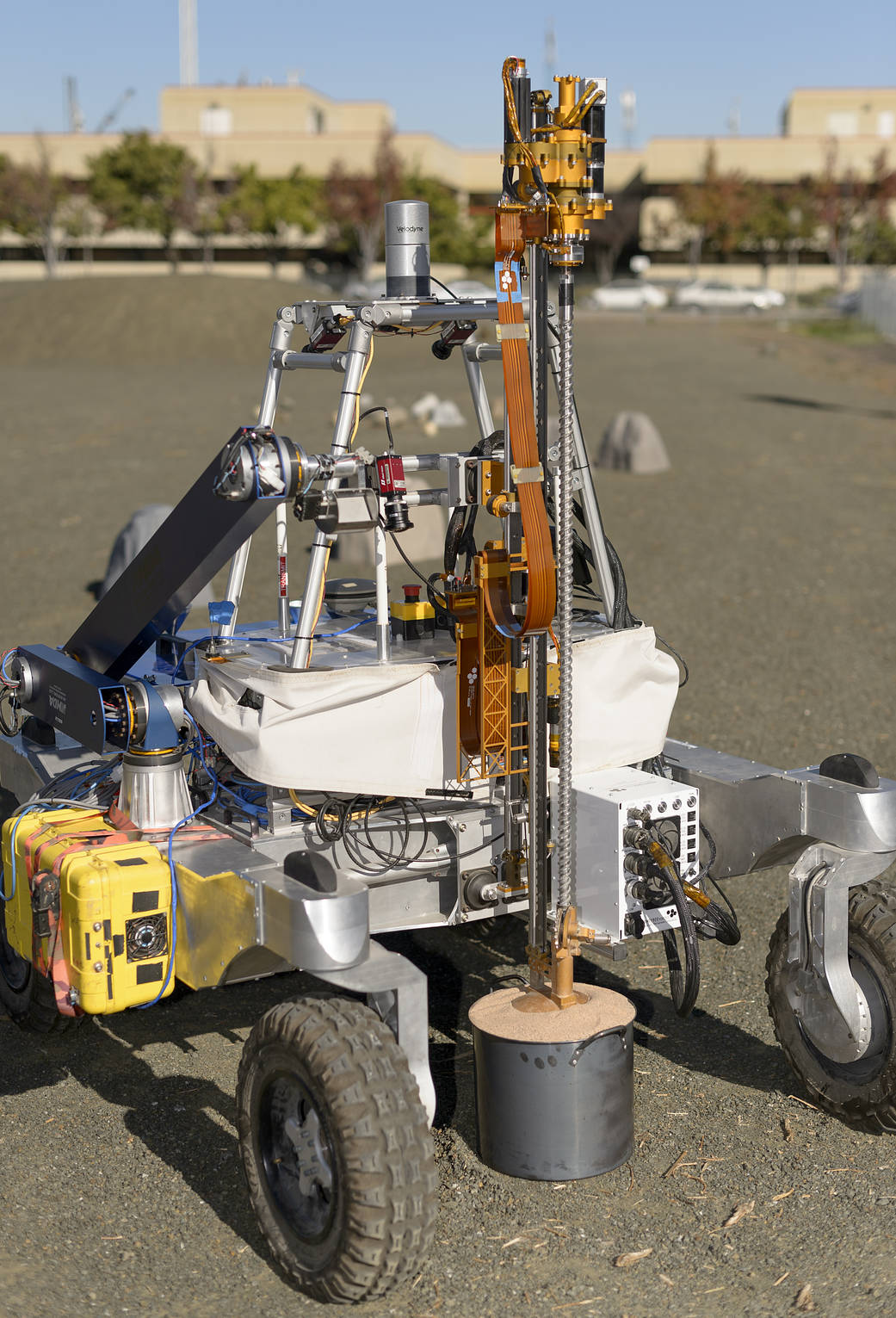
Before sending a future rover to Mars to search for signs of life, NASA will test a prototype version here on Earth. This rover is being put through its paces in California, at NASA’s Ames Research Center, before “graduating” to the very Mars-like environment of Chile’s Atacama Desert. This includes testing the rover’s drill and its ability to cut through soil similar to the Atacama’s and pull up a soil sample. The team simulated the desert in a large cooking pot by combining layers of sand and salt in similar proportions to the Atacama and baking the mixture until it was almost as dry and sterile. With the drill positioned over the pot, the rover is now ready to follow its automated drilling code and independently collect samples from below ground.
+++
The Atacama Rover Astrobiology Drilling Studies, or ARADS, project is designing tools and techniques that could be used to search for life one day on Mars or other places in the Solar System. The team’s prototype rover combines the ability to move across the surface, drill down to collect soil samples, and feed them to several life-detection instruments on board. The extreme conditions of Chile’s Atacama Desert provide one of the most Mars-like environments on Earth, where the team can test and refine these technologies and methods.
ARADS is led by NASA’s Ames Research Center in California’s Silicon Valley. Partners include NASA centers Goddard Space Flight Center in Greenbelt, Maryland, and the Jet Propulsion Laboratory in Pasadena, California, as well as Johns Hopkins University in Baltimore, Maryland, Honeybee Robotics in New York, the University of Antofagasta and CampoAlto SpA, both in Chile, and Spain’s Center for Astrobiology.


























